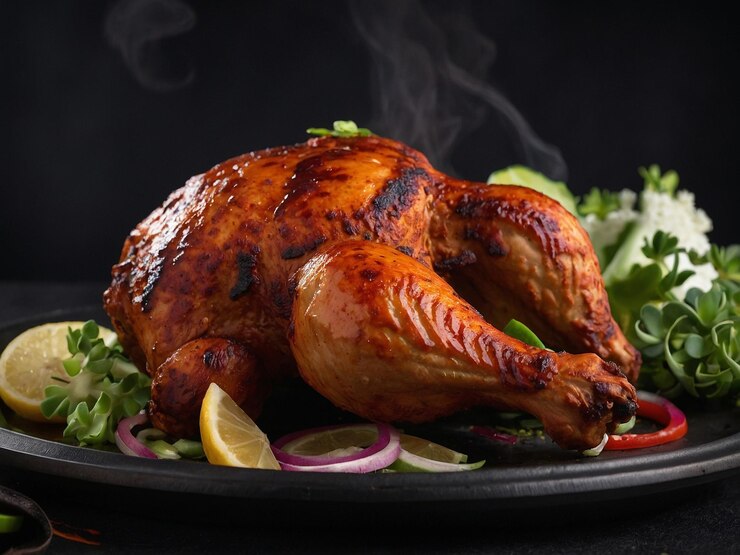Turkish cuisine is a vibrant tapestry woven from a rich history and a diverse array of influences. Among its many offerings, Çeciir stands out as a beloved dish that holds a special place in the hearts of those who savor it. This article explores the origins, preparation, and cultural significance of Çeciir, shedding light on why it has become such an integral part of Turkish culinary tradition.
The Origins of Çeciir
Historical Background
The story of Çeciir is one of deep roots in Turkish culinary history. This dish, like many others in Turkey, has evolved over centuries, influenced by the various cultures and empires that have shaped the region. While the exact origin of Çeciir is difficult to pinpoint, it is believed to have been a staple in Turkish homes for generations, passed down through the ages as a comforting and nourishing meal.
Regional Variations
Çeciir is not a monolithic dish; it varies from region to region across Turkey. Each area has its own unique take on the dish, reflecting the local ingredients and culinary traditions. In some parts of Turkey, Çeciir might be spicier, while in others, it could feature a richer array of herbs and vegetables. These regional variations add to the dish’s charm and showcase the diversity of Turkish cuisine.
Ingredients Used in Çeciir
Core Ingredients
The essence of Çeciir lies in its simplicity and the quality of its ingredients. At its core, Çeciir typically includes a base of grains or legumes, such as bulgur, rice, or lentils, combined with a variety of vegetables like tomatoes, peppers, and onions. Olive oil is often used to enhance the flavors, and the dish is seasoned with a blend of spices that may include cumin, paprika, and mint. The freshness of these ingredients is crucial, as it directly influences the flavor and texture of the final dish.
Optional Additions
While the basic recipe for Çeciir is straightforward, there are many ways to customize it based on personal preferences or regional styles. Some cooks might add meat, such as lamb or chicken, to make the dish heartier, while others might incorporate nuts, dried fruits, or even yogurt for a different texture and flavor profile. The flexibility of Çeciir is one of the reasons it remains so popular, as it can be adapted to suit a wide range of tastes and dietary needs.
How to Prepare Çeciir
Traditional Recipe
Preparing Çeciir traditionally is a labor of love, involving several steps that ensure the dish’s rich flavors are fully developed. Typically, the grains or legumes are cooked first, either by boiling or steaming, until they reach a tender consistency. Vegetables are then sautéed in olive oil, with spices added to create a fragrant base. The cooked grains are combined with the vegetable mixture, allowing the flavors to meld together. The dish is often simmered gently until everything is perfectly cooked and infused with the spices.
Modern Twists
In contemporary kitchens, Çeciir has seen some modern reinterpretations. Some chefs experiment with alternative grains like quinoa or couscous, while others might introduce new spices or cooking techniques, such as grilling the vegetables before adding them to the mix. These modern twists on Çeciir demonstrate the dish’s versatility and its ability to evolve while still honoring its traditional roots.
The Cultural Significance of Çeciir
Çeciir in Turkish Celebrations
Çeciir is more than just a dish; it’s a symbol of togetherness and tradition in Turkish culture. It is often prepared for special occasions and family gatherings, where it is shared among loved ones as a sign of hospitality and warmth. The dish’s presence at such events underscores its role in Turkish society as a comfort food that brings people together.
Symbolism and Meaning
In Turkish culture, the ingredients in Çeciir can carry symbolic meanings. For example, grains like bulgur or rice are often associated with abundance and prosperity, while the use of olive oil might symbolize peace and harmony. These symbolic meanings add a layer of cultural richness to the dish, making it not just a meal, but a representation of Turkish values and traditions.
Health Benefits of Çeciir
Nutritional Value
Çeciir is not only delicious but also nutritious. The grains and legumes used in the dish are excellent sources of fiber, protein, and essential vitamins and minerals. The vegetables add antioxidants and additional nutrients, while olive oil provides healthy fats that are beneficial for heart health. This balance of ingredients makes Çeciir a well-rounded meal that can contribute to a healthy diet.
Healthier Variations
For those with specific dietary needs, Çeciir can be easily adapted. For example, it can be made gluten-free by using gluten-free grains or legumes. For vegans, the dish can be prepared without any animal products, relying on the natural flavors of the vegetables and spices. These variations ensure that Çeciir remains accessible and enjoyable for everyone, regardless of dietary restrictions.
Where to Find Authentic Çeciir
Best Places to Eat Çeciir in Turkey
If you’re traveling to Turkey, experiencing Çeciir in its homeland is a must. The best places to enjoy authentic Çeciir are often in local restaurants and markets, where the dish is prepared using traditional methods and fresh, local ingredients. Cities like Istanbul, Gaziantep, and Ankara are known for their culinary scenes and offer many opportunities to taste regional variations of Çeciir.
International Availability
For those outside Turkey, finding authentic Çeciir can be a bit more challenging, but it’s not impossible. Turkish restaurants around the world often include Çeciir on their menus, and many international markets carry the necessary ingredients to make the dish at home. Additionally, online stores that specialize in Turkish products can be a great resource for sourcing the spices and grains needed to create an authentic Çeciir experience.
Pairing Çeciir with Other Foods
Traditional Turkish Pairings
Çeciir is often served alongside other traditional Turkish dishes, creating a balanced and flavorful meal. It pairs well with grilled meats, such as kebabs, or with other vegetarian dishes like stuffed grape leaves (dolma) and yogurt-based salads. The combination of these dishes highlights the diverse flavors of Turkish cuisine and makes for a satisfying dining experience.
Beverage Pairings
In Turkey, Çeciir is commonly enjoyed with a glass of ayran, a traditional yogurt-based drink that complements the dish’s savory flavors. For those looking for a non-dairy option, a simple glass of water or a light tea can also be a good match. If you prefer something more robust, a glass of Turkish red wine can add an extra layer of depth to the meal.
How Çeciir is Enjoyed Today
Çeciir in Modern Turkish Cuisine
While Çeciir remains a traditional dish, it has also found a place in modern Turkish cuisine. Chefs in contemporary Turkish restaurants are experimenting with the dish, incorporating it into gourmet menus and fusion cuisine. These modern interpretations keep the tradition of Çeciir alive while introducing it to new audiences.
Global Influence of Çeciir
As Turkish cuisine continues to gain popularity worldwide, Çeciir is becoming increasingly recognized and appreciated beyond Turkey’s borders. Turkish restaurants in cities around the globe are showcasing Çeciir as part of their menus, helping to spread the flavors and traditions of Turkish food to a wider audience. This global influence is a testament to the dish’s universal appeal and enduring significance.
Cooking Çeciir at Home
Essential Kitchen Tools
To prepare Çeciir at home, you don’t need any special equipment—just a few basic kitchen tools. A good quality pot or pan for cooking the grains and sautéing the vegetables is essential, along with a sharp knife for chopping. A wooden spoon for stirring and a serving dish to present the final product are also recommended to create an authentic experience.
Common Mistakes to Avoid
While Çeciir is a relatively simple dish to make, there are a few common pitfalls to be aware of. Overcooking the grains or vegetables can result in a mushy texture, while under-seasoning can lead to a bland dish. It’s important to taste as you go and adjust the seasoning to your preference. Another mistake to avoid is using low-quality ingredients, as the flavor of Çeciir relies heavily on the freshness and quality of its components.
Frequently Asked Questions About Çeciir
What is Çeciir?
Çeciir is a traditional Turkish dish made from a base of grains or legumes, combined with vegetables, olive oil, and spices. It is a versatile and nourishing meal that is deeply rooted in Turkish culinary traditions.
How Do You Serve Çeciir?
Çeciir can be served as a main dish or as a side. It is often presented in a large serving dish, garnished with fresh herbs, and accompanied by yogurt, salads, or grilled meats.
Can Çeciir Be Made Ahead of Time?
Yes, Çeciir can be made ahead of time and stored in the refrigerator for a few days. It reheats well, making it a convenient option for meal prep. To reheat, simply warm it in a pan over low heat, adding a little water or broth if necessary to keep it from drying out.
Is Çeciir Suitable for Special Diets?
Çeciir is highly adaptable and can be modified to fit various dietary needs. It can be made gluten-free, vegan, or adjusted to suit other dietary restrictions, making it a versatile dish for many people.
Conclusion
Çeciir is more than just a dish—it’s a reflection of Turkey’s rich culinary heritage and a symbol of the country’s values of hospitality and togetherness. Whether you’re enjoying it in a traditional Turkish home, a modern restaurant, or preparing it in your own kitchen, Çeciir offers a taste of Turkey’s deep-rooted food culture. By embracing the tradition of Çeciir, you’re not just savoring a delicious meal—you’re partaking in a centuries-old tradition that continues to bring people together around the table.








